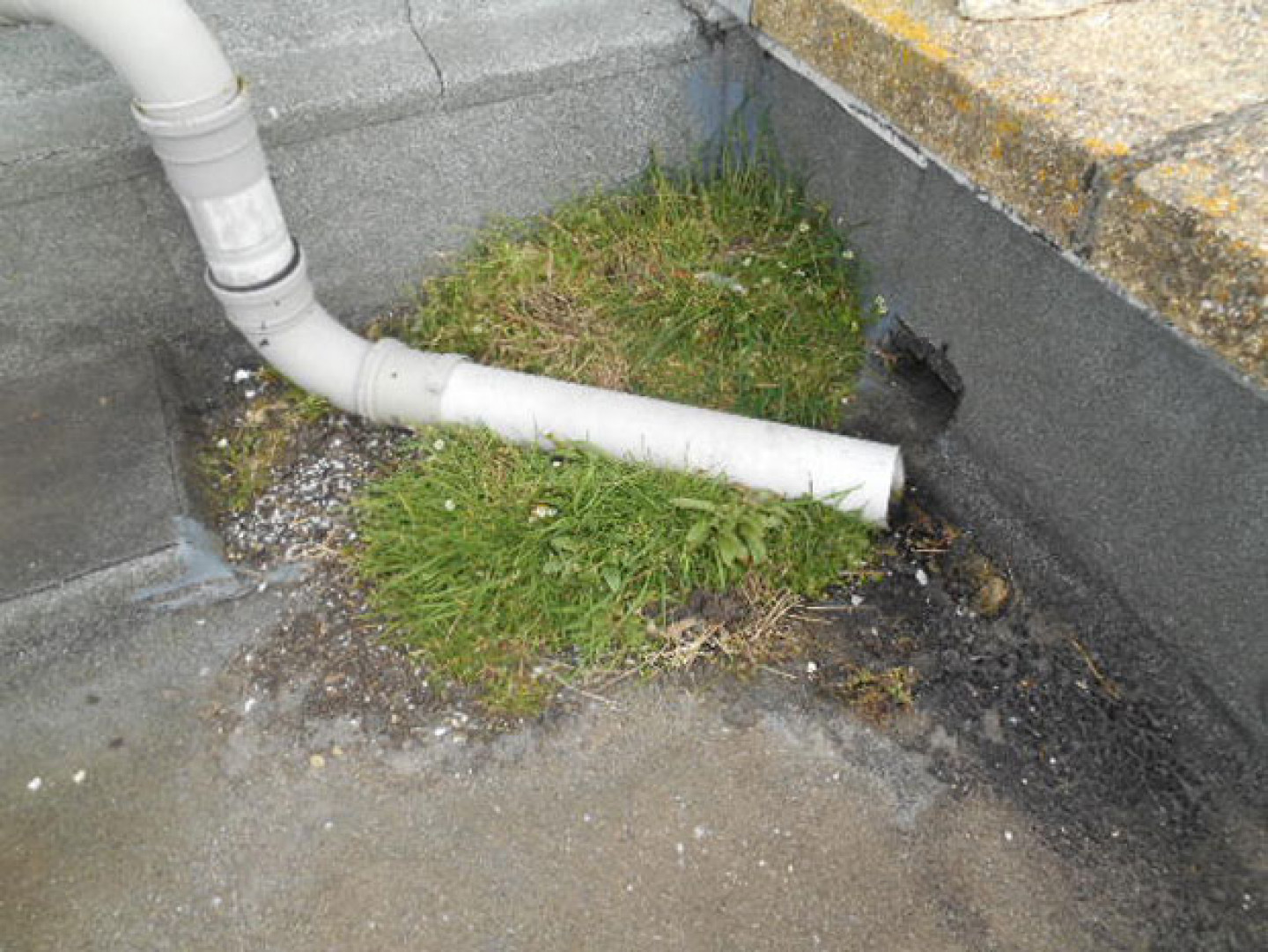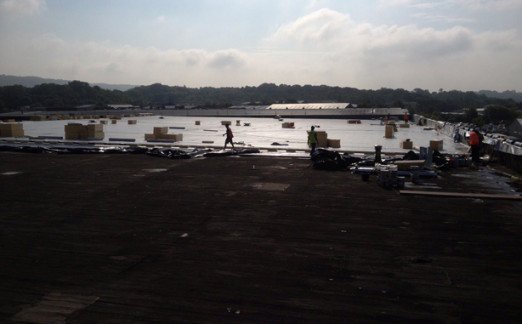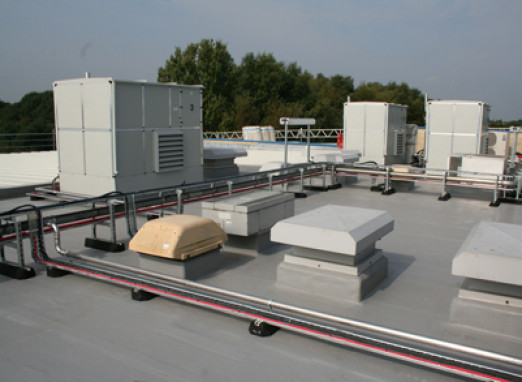Flat roofs have a reputation for being problematic and prone to leaks. SIG Design & Technology’s technical manager Steve Cleminson doesn’t agree and looks at the catalogue of problems revealed after a recent survey on a failing flat roof and how to easily prevent them.
The horror story
We were contacted recently by one of our main contractor clients about a failing flat roof they were looking at, so we arranged a survey. Here’s what we found.
The survey showed that the roof had certainly been neglected; in fact it had been ignored. The working life of the asphalt had been shortened by a lack of care and poor design. The asphalt was age hardened and brittle, and as a result thermal and structural movement had led to splits and cracks, allowing water penetration. The roof had then been repaired using additional pieces of bituminous cap sheet, and with liquid treatments. These repairs had failed causing large blisters to appear, evidence of trapped air and moisture.
There were also large areas of ponding water; in some locations there were blisters in the ponds!
Ponding water causes several problems, including temperature variations between the ponds and adjoining dry areas, and freeze/thaw cycles in winter.
Outlets in the parapet which are designed to allow water to leave the roof were blocked with debris (including large pieces of timber) and silt, which had built up for so long that plants were growing in it. Despite the roof not being designed as a “Green” roof it was doing a pretty good impersonation of one.
How to Prevent Flat Roof Leaks
Due to the poor state of the roof thousands of pounds of damage had been caused to the building beneath and rather than consideration being given to an over cover, our proposal had to be for a full strip off and start again – as well as the damage to the building underneath it ended up costing the client three times more to fix than what could have been an over cover solution.
But could this situation have been avoided? Most definitely and in four simple steps:
1. Good Design
Maintenance is extremely important for all roofs, but maintenance programmes can be simpler and less onerous if the roof is properly designed to begin with. For example, there is a tendency to design flat roofs to minimums. Minimum falls, minimum upstands. But minimums are exactly what they state “Minimums”. Designers should feel free to design at more than the minimum. They should design for a realistic, reasonable maintenance regime. And don’t be under the illusion that ‘Flat Roofs’ are flat. They are not.
2. Installation by trained contractors
Most creditable suppliers run product specific training courses and ensure their products can only be purchased and installed by people who know and care that the installation is done right. This isn't just because they have morals; it’s also good business sense as it means less wasted time following up on problems, costly journeys returning to leaking roofs and/or having to face a disgruntled client.
3. Planned, proactive maintenance
A roof denied an occasional inspection is storing up bigger problems for later. If you don’t have a good maintenance regime in place, you’ll see a dramatic acceleration in the aging of the whole roof installation. This will bring about completely unnecessary and onerous costs.
4. Appropriate Repair or Replacement
No roof lasts forever, but a well-designed, well maintained roof can give a full life of service. Some of our flat roof products have been successfully protecting roofs for over 50 years. On occasion, incidents such as falling debris, high wind or storm damage will need remedial treatment, and this needs to be undertaken using the correct materials suitable for the roof finish, properly prepared and applied by trained professionals.
Alongside our product partners, and with our team of site inspectors, we inspect thousands of flat roofs every year, so there’s little we haven’t seen on a flat roof.



